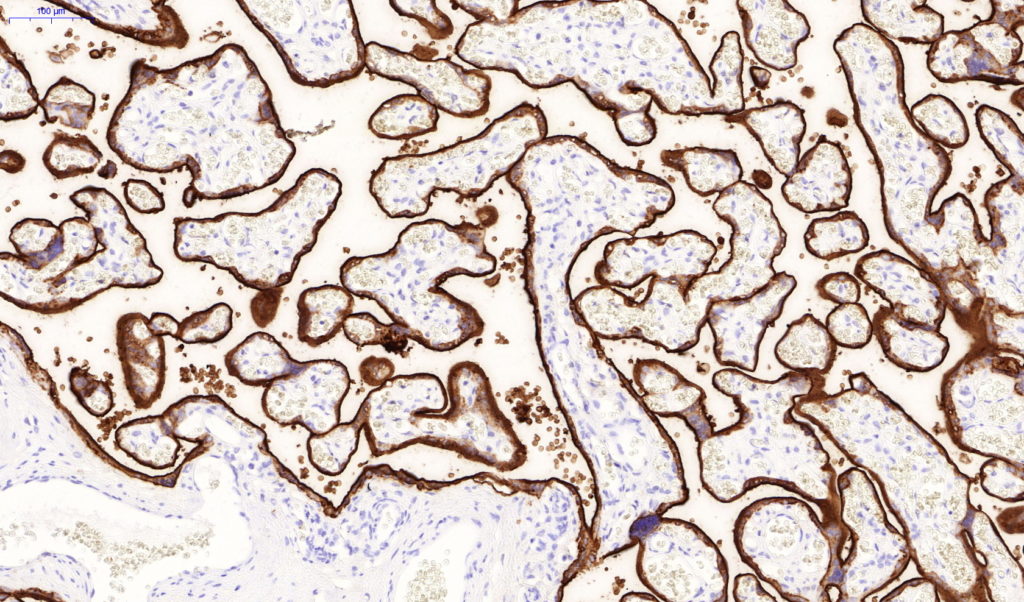Rabbit Monoclonal Antibody
Reacts with a 70kDa membrane-bound isozyme of Placental Alkaline Phosphatase (PLAP) occurring in the placenta during the 3rd trimester of gestation. It is highly specific for PLAP and shows no cross reaction with other isozymes of alkaline phosphatase. Anti-PLAP reacts with germ cell tumors and can discriminate between these and other neoplasms. Somatic neoplasms e.g. breast, gastrointestinal, prostatic and urinary cancers may also immunoreact with antibodies to PLAP. Anti-PLAP positive in conjunction with anti-keratin positive, but they regularly fail to stain with anti EMA, whereas most carcinomas stain with anti-EMA. Anti-PLAP as been useful in the diagnosis of gestational trophoblastic disease.
Availability:
| Catalog No. | Contents: | Volume: |
| ILM2500-C01 | PLAP | 0,1 ml concentrate |
| ILM2500-C05 | PLAP | 0,5 ml concentrate |
| ILM2500-C1 | PLAP | 1,0 ml concentrate |
Intended use: For Research Use Only
Reactivity: Human, others not known
Clone: ALPP/8112R
Human Gene ID: 250
Human SwissProt: P05187
Human Unigene: 284255
Species of origin: Rabbit
Isotype: IgG, Kappa
Control Tissue: Placenta
Staining: membranous
Presentation: Bioreactor Concentrate with 0.05% Azide
Application and suggested dilutions:
Pre-treatment: Heat induced epitope retrieval in 10 mM citrate buffer pH6.0 for 20 minutes is required for IHC staining on formalin-fixed, paraffin embedded tissue sections.
- Immunohistochemical staining of formalin-fixed, paraffin embedded tissue section (dilution up to 1:200)
- Western blot (1-2ug/ml)
The optimal dilution for a specific application should be determined by the investigator.
Note: Dilution of the antibody in 10% normal goat serum followed by a Goat anti-Rabbit secondary antibody-based detection is recommended.
Storage & Stability: Store at 2-8 °C. Do not use after expiration date printed on the vial.
Reference:
Wick, MR, et al 1987; Human Pathol. 18(9);946-54

